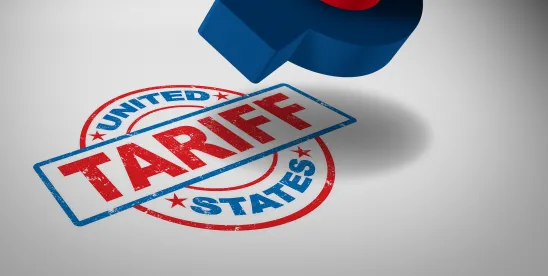On February 1, 2025, President Trump declared a national emergency based upon the threat posed by undocumented foreign workers and drugs entering the United States. The White House has published a fact sheet outlining steps to address the threat by implementing (i) a 25% additional tariff on imports from Canada and Mexico, (ii) a 10% additional tariff on imports from China, and (iii) a carveout for a lower 10% tariff for energy resources from Canada (see Fact Sheet: President Donald J. Trump Imposes Tariffs on Imports from Canada, Mexico and China – The White House).
President Trump declared the national emergency pursuant to the International Emergency Economic Powers Act (IEEPA) and the National Emergencies Act. This action marks the first time a President has used the IEEPA to impose tariffs. President Nixon had used a precursor law to impose 10% tariffs on all imports in 1971 in order to avoid a balance of payments crisis resulting from ending the U.S. dollar’s gold standard (see prior alert Can the President Impose Tariffs Without Congressional Approval?).
President Trump issued Executive Orders imposing these additional tariffs on Canada, China, and Mexico (see link to Canada EO, China EO (unpublished), and Mexico EO (unpublished)).[1] The Executive Orders generally provide that the IEEPA national security tariffs may be removed if Canada and Mexico demonstrate adequate steps have been undertaken to alleviate the illegal migration and illicit drug crisis through cooperative actions, and China demonstrates adequate steps have been taken to alleviate the opioid crisis through cooperative actions.
A quick overview of five key initial questions:
1. When do the IEEPA national security tariffs take effect?
These IEEPA national security tariffs will be collected at the ad valorem rate of duty beginning 12:01 am ET, Tuesday, February 4, 2025.
2. How do I know if my import is subject to the IEEPA national security tariffs?
The Executive Orders reference “all articles” suggesting that the IEEPA national security tariff will apply to all merchandise imported from Canada, China, and Mexico; excepting that, there will be a carveout for energy from Canada, with the definitions based upon section 8 of Executive Order 14156 of January 20, 2025 (Declaring a National Energy Emergency). The necessary modifications to the Harmonized Tariff Schedule of the United States will be updated by the Department of Homeland Security and published in the Federal Register.
3. How is the IEEPA national security tariff rate calculated and applied?
The IEEPA national security tariff will be collected at an ad valorem rate based upon the entered value of the merchandise, meaning that the IEEPA national security tariff will be calculated on the entered value of the merchandise and simply added to any other duty applicable on the subject merchandise.
4. Who is responsible for paying the IEEPA national security tariff?
The importer of record is responsible for paying all duties to U.S. Customs and Border Protection. There is no change to this requirement.
5. Is there a process to apply for exclusions from IEEPA national security tariffs?
There have been no stated exemptions or processes for exclusions from the IEEPA national security tariffs, but importers may continue to review mitigation strategies for application (see prior alert Preparing for Tariff Increases – Mitigation Strategies: Miller Canfield).
In addition, the Executive Orders further provide that:
- There is no duty drawback available for the covered merchandise, i.e. the refund of duties, taxes, and fees paid on imported merchandise subsequently exported or destroyed;
- Merchandise must be admitted as “privileged foreign status,” meaning the merchandise remains subject to the tariff based upon its imported state, regardless of whether the classification changes in a Free Trade Zone, i.e. no avoiding the tariff by importing the merchandise into a Free Trade Zone;
- There is no de minimis treatment available under Section 321, i.e. duty free treatment for shipments below $800; and
- The President may increase or expand in scope the tariffs imposed under the Executive Orders upon retaliation against the United States by Canada, China, or Mexico through the application of tariffs or similar.
Because the imposition of additional IEEPA national security tariffs remains in flux, importers should carefully monitor this situation. For up-to-date advice and assistance on mitigation options to tariff exposure applicable to your business, please contact your Miller Canfield attorney or one of the authors of this alert.
[1] Press reports indicate that the China EO and Mexico EO have been signed and are similar in form, but as of the time of this publication the China EO and Mexico EO have not yet been posted to www.whitehouse.gov.






 />i
/>i
